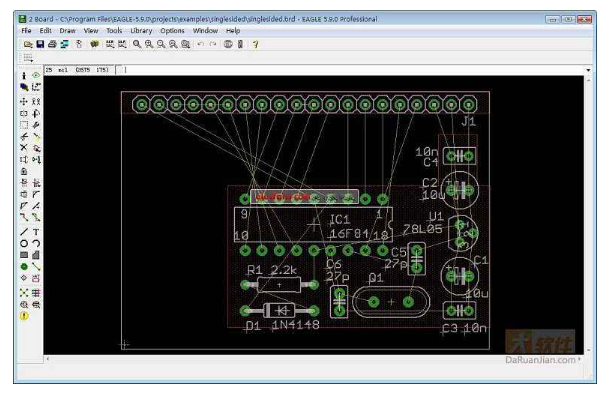Today, I want to talk about a question that many beginners in PCB design often ask. It's also a topic that has been frequently raised by many new learners recently: with so many PCB design software options available today, which one should you choose to learn?
Currently, the three major PCB design tools dominate the market. I won’t be discussing others that are not mainstream.
1. Altium Designer (AD), often considered an upgraded version of Protel. 2. PADS. 3. Cadence Allegro.
I won't mention Protel 99 anymore—it’s outdated and can't handle complex boards. Besides these three, there are other powerful tools like Cadstar, CR5000, PCAD, Mentor EE, Mentor WG, Mentor EN, PADS Professional, and more. However, their market share is much smaller, and they are less commonly used in industry. For a beginner, learning them may not be as beneficial for job opportunities since fewer companies use them.

So we'll focus on the three main software solutions.
1. Analysis of Altium Designer

Altium Designer (including Protel 99) is mainly used for simpler boards, such as those based on microcontrollers or basic industrial designs. It's generally used for 2-layer or 4-layer boards. In China, it's more common in less developed cities. Most companies using this software have relatively simple products. However, it has a high market share in mainland China, largely due to its inclusion in university curricula. Many students learn it in school, and many continue to use it after graduation. As a result, AD remains popular among Chinese engineers, especially in less developed regions.
2. Analysis of PADS

PADS was originally known as PowerPCB. It has a clean interface and is relatively easy to get started with. This might explain its popularity in the consumer electronics sector. In the past, it dominated markets like VCDs, DVDs, MP3 players, and even early smartphones. Today, it's still widely used in consumer electronics, including mobile phones, car electronics, and smart TVs. While its market share has slightly declined due to the rise of Allegro, it's still dominant in coastal cities like Shenzhen. Learning PADS can open up good job opportunities in these areas.
3. Analysis of Cadence Allegro

Cadence Allegro is known for its advanced features and efficiency, especially when designing large boards like computer motherboards or server boards. However, it has a steeper learning curve compared to other tools. It's primarily used by larger companies that deal with complex and high-layer-count designs. While its market share is smaller than PADS, it offers strong long-term career prospects, especially in industries requiring high-end PCB design.
Conclusion on Which Software to Learn:
If you're working on simple boards, AD is a good choice. For consumer electronics, PADS is ideal. If you're dealing with large-scale boards, Allegro is the way to go. Learning PADS or Allegro can give you better job opportunities in coastal cities, while AD is more common in mainland China. Of course, this isn't absolute—some companies in Shenzhen still use AD, but they’re fewer in number.
Also, keep in mind that some software may not be suitable for certain projects. For example, using AD to design a smartphone or tablet is rare. Companies usually prefer PADS or Allegro for such tasks. So if you're targeting a specific industry, it's important to choose the right tool.
In terms of salary, different software and board types can lead to different pay scales. For instance, companies in mainland cities may offer lower salaries for simpler boards, while coastal cities with more advanced designs may pay better. Personally, I've noticed that Allegro users often earn slightly more than PADS users, though this varies depending on the region and company.
Ultimately, your choice of software should align with your career goals. If you're aiming for a job in a specific city or industry, research what tools are most in demand there. A great way to do this is to check job listings on recruitment websites in your area. Look at the required software and see which ones are most commonly mentioned. This will give you a clear idea of what's in demand locally.
Remember, software is just a tool. What matters most is your skill and understanding. However, if you're looking for a stable job, choosing the right software can make a big difference. Whether you're starting out or looking to advance, knowing which tools are in demand is key to success in the PCB design field.
Features
â—† Wide Application
Widely used for various kinds of electrical products, instrument, car, boat, household appliances such as lights, water dispenser, treadmill, coffee pot, speaker, electric car, motorcycle, TV, massage machine etc.
â—† Easy to install and use
3 PIN on-off Rocker Switch with SPST design, simple installation, freely turn on or off the load which you want to control.
â—† High Operating Life
Made of high quality polyamide eP(Nylon PA66) material, this sturdy mini boat rocker switch is born for anti-corrosion,anti-acid and high resistant with silver terminals.100,000 times of ON/OFF operating life span.
Round Rocker Switch,Power Rocker Switch,Black Rocker Switch,Sealed Rocker Switch
Ningbo Jialin Electronics Co.,Ltd , https://www.donghai-switch.com